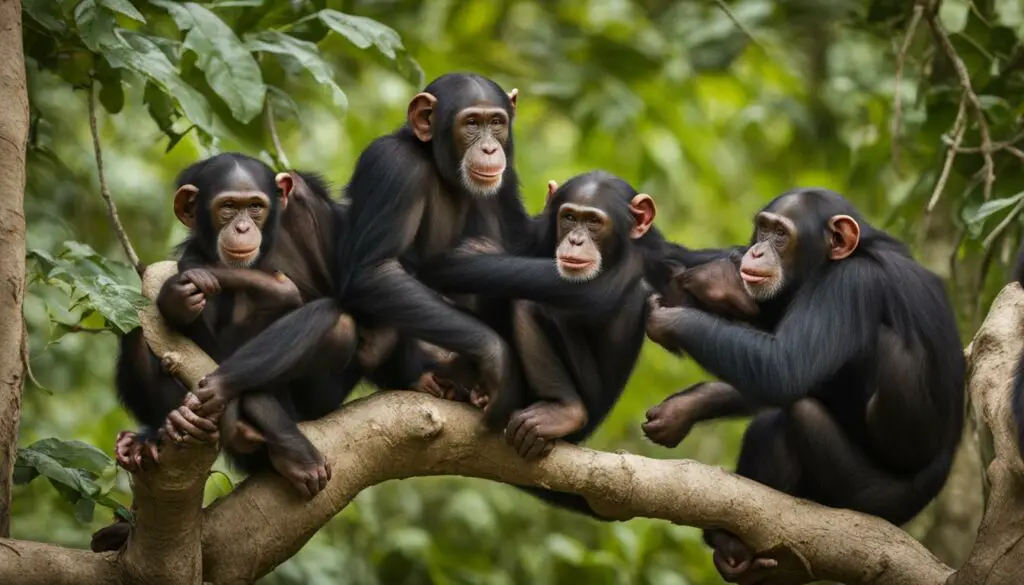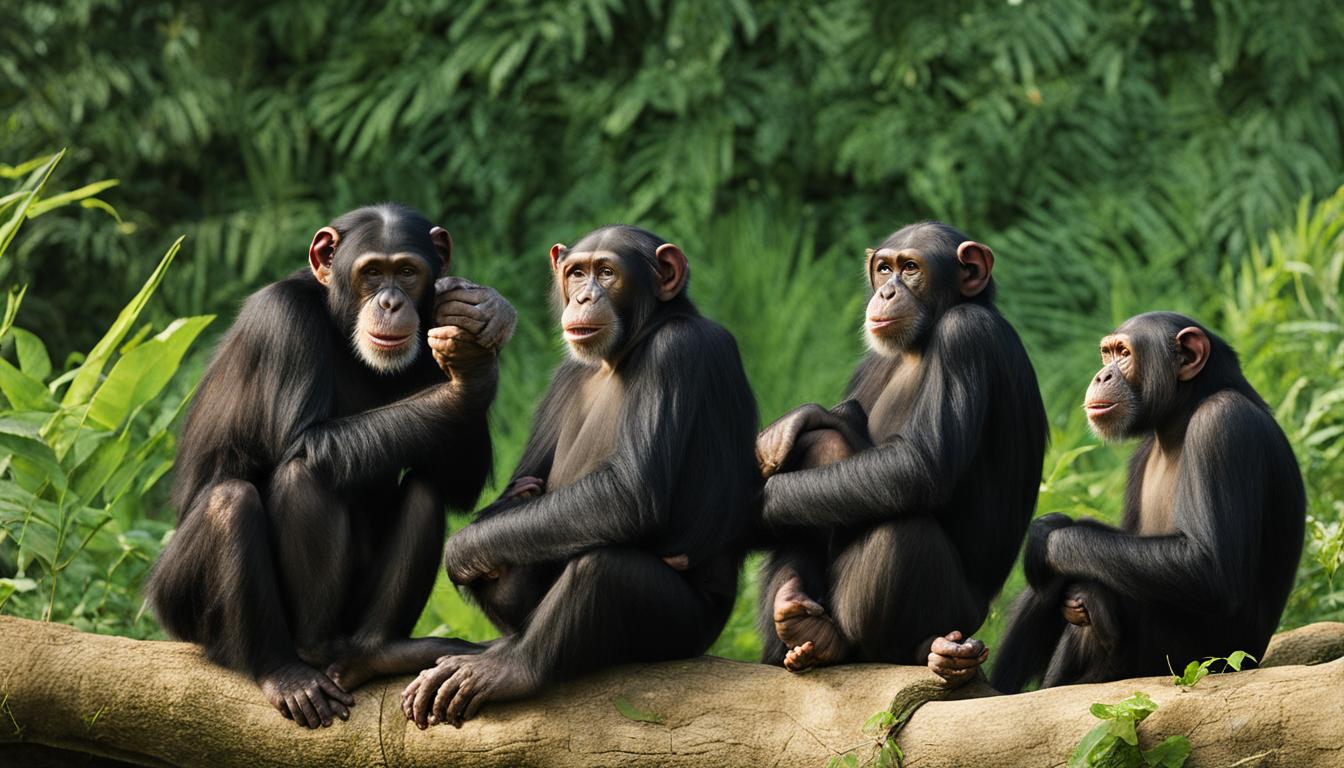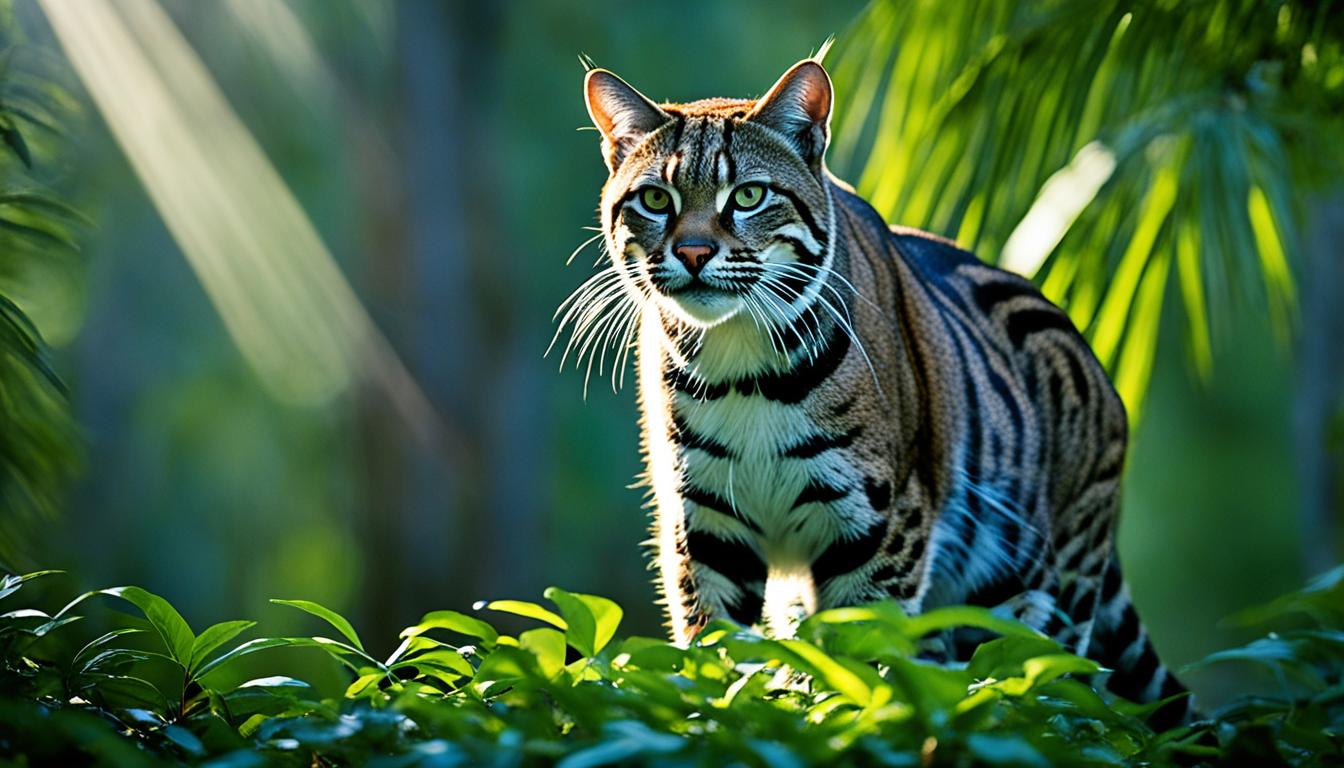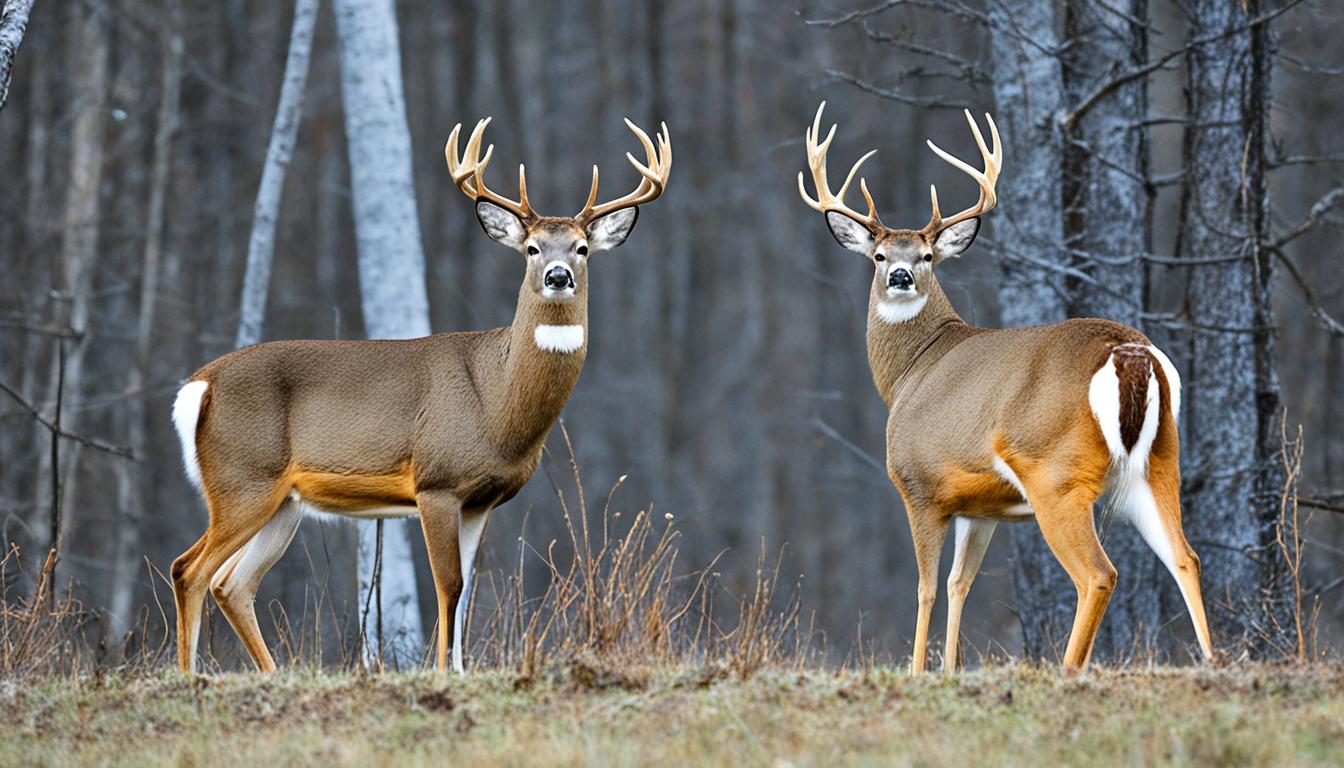Chimpanzees, also known as chimps, are fascinating creatures native to Africa. These amazing apes are classified into different subspecies, each with their own unique characteristics and distinctions. In this article, we will explore the various types of chimpanzees, their physical traits, behaviors, and the importance of their conservation.
Chimpanzees are classified into four confirmed subspecies: Pan troglodytes verus, Pan troglodytes ellioti, Pan troglodytes troglodytes, and Pan troglodytes schweinfurthii. These subspecies differ in terms of their geographic distribution and physical variations. From size and weight to coloration and behavior, each subspecies of chimpanzees has adapted to different habitats within Africa, ranging from forests to savannahs.
Join us as we delve into the world of chimpanzees and discover the wonders of these incredible creatures. Learn about their diverse species, understand their classifications, and gain insights into their unique characteristics. Together, let’s explore the amazing world of chimpanzees and appreciate the importance of protecting these remarkable animals for future generations.
Physical characteristics of chimpanzee species
The diverse chimpanzee species exhibit a range of physical variations that set them apart from one another. These unique chimpanzee breeds can be distinguished based on factors such as size, weight, and coloration. Understanding the taxonomy of chimpanzee species is essential to appreciate the incredible diversity within this primate family.
Chimpanzees generally have a robust build, with males weighing between 40 and 70 kg (88-154 lb) and females weighing between 27 and 50 kg (60-110 lb). Their long arms and short legs, combined with hands adapted for grasping, make them well-suited for life in their natural habitats. Covered in coarse black hair, chimpanzees may have slightly different shades of coloration depending on their subspecies. The face, fingers, toes, palms of the hands, and soles of the feet are bare, providing them with increased dexterity.
With these physical features, chimpanzees thrive in a variety of environments, displaying a range of behaviors. Their sturdy build and adapted hands enable them to climb trees and swing from branch to branch effortlessly. Additionally, their flexible pelvis allows for efficient movement both on the ground and in the trees. These physical characteristics make chimpanzees exceptional creatures in the animal kingdom.
To further illustrate the physical distinctions among chimpanzee subspecies, the table below highlights key features of each:
| Chimpanzee Subspecies | Size | Weight | Coloration |
|---|---|---|---|
| Pan troglodytes verus | Smallest | Lighter | Light brown or pinkish |
| Pan troglodytes ellioti | Small | Slightly heavier than verus | Dark brown or black |
| Pan troglodytes troglodytes | Medium | Heavier | Black or brown |
| Pan troglodytes schweinfurthii | Largest | Heaviest | Dark black |
This table demonstrates the varying physical characteristics of chimpanzee subspecies, providing insight into the diverse nature of these fascinating animals. The differences in size, weight, and coloration contribute to their unique appearances and adaptations to specific African habitats.
Behavioral Characteristics of Chimpanzee Species
Chimpanzees exhibit a wide range of behavioral characteristics, which contribute to their status as highly intelligent and fascinating animals. With distinct populations and various lineages, each subspecies of chimpanzee showcases unique behaviors that offer insight into their social structure, communication, and problem-solving abilities. Understanding these behavioral characteristics is essential for appreciating the complexity of chimpanzee societies and their similarities to humans.
Social Structure: Chimpanzees are known for their highly social nature and live in communities consisting of multiple individuals. These groups can range in size from 15 to 150 members, with each group having a strict male-dominated hierarchy. Within these hierarchies, disputes are generally resolved without violence, utilizing complex social behaviors such as reconciliation, grooming, and displays of dominance.
Tool Usage and Problem-Solving: One of the most remarkable behavioral characteristics of chimpanzees is their use of tools. Almost all chimpanzee populations have been observed using tools for various purposes, including hunting, acquiring food, and accessing resources. This behavior demonstrates their ability to innovate and adapt to their environment. Chimpanzees also exhibit problem-solving skills, utilizing their intelligence to overcome obstacles and find solutions to challenges they encounter.
Chimpanzees have been observed using sticks to extract insects from trees, using rocks to crack open nuts, and fashioning tools to access hard-to-reach food sources. These behaviors highlight their cognitive abilities and showcase their capacity for complex problem-solving.
Communication and Cooperation: Chimpanzees have a rich repertoire of communication methods, ranging from vocalizations and gestures to facial expressions and body postures. They use these forms of communication to convey information, express emotions, and coordinate group activities. Chimpanzees also exhibit cooperative behaviors, such as hunting in groups or working together to defend territories.
Overall, the behavioral characteristics of chimpanzee species reflect their remarkable adaptability, intelligence, and social nature. These distinct populations and various lineages provide valuable insights into the evolutionary history and behavior of both chimpanzees and humans. By studying and protecting these incredible animals, we can gain a deeper understanding of ourselves and the natural world we share.

Threats to Chimpanzee Species
Chimpanzees, one of our closest primate relatives, face numerous threats to their survival. Currently listed as endangered on the IUCN Red List, these magnificent creatures require urgent conservation efforts to protect their dwindling populations.
Habitat loss poses a significant threat to chimpanzees. Deforestation and human encroachment have resulted in the destruction and fragmentation of their natural habitats. As their living spaces shrink, chimpanzees are forced to compete for limited resources, leading to population decline and increased vulnerability to other threats.
Poaching is another major concern for chimpanzees. The illegal bushmeat trade and demand for exotic pets contribute to the illegal hunting and capture of these animals. The loss of adult individuals, especially breeding females, disrupts social dynamics and reduces the chances of population recovery.
“The protection and conservation of chimpanzees are essential for maintaining the biodiversity of our planet and preserving our shared evolutionary heritage.” – Jane Goodall
In addition to habitat loss and poaching, chimpanzees are also susceptible to diseases. Outbreaks, such as the Ebola virus, have devastating effects on their populations. Chimpanzees share a significant genetic similarity with humans, making them susceptible to many of the same infectious diseases.
Efforts to conserve chimpanzees and their habitats are crucial for their survival. Conservation initiatives focus on habitat preservation, anti-poaching measures, and education to raise awareness about the importance of protecting these endangered species. By taking action now, we can ensure that future generations will have the opportunity to marvel at the incredible diversity and intelligence of chimpanzees.
| Threat | Description |
|---|---|
| Habitat Loss | Deforestation, human encroachment, and habitat fragmentation |
| Poaching | Illegal hunting for bushmeat and capture for the pet trade |
| Disease | Outbreaks, such as Ebola, that can devastate chimpanzee populations |
Conclusion
Chimpanzees are remarkable creatures that exhibit diverse species and distinct populations. Understanding the different subspecies and their characteristics is crucial for their conservation. These incredible animals face numerous threats, making it imperative for us to protect them and their habitats.
Conservation efforts play a vital role in ensuring the survival of chimpanzees. By preserving their natural habitats, implementing anti-poaching measures, and promoting education, we can make a significant impact. It is through these actions that we can safeguard the future of these close primate relatives.
Chimpanzee conservation is not just about protecting a species; it’s about recognizing the importance of our shared evolutionary history. These intelligent creatures offer valuable insights into human behavior and our place in the natural world. By taking steps to conserve chimpanzees, we are not only preserving a precious species but also securing a brighter future for ourselves.
Can you provide a comprehensive list of the different species of chimpanzees and their distinct characteristics?
Certainly! The different species of chimpanzees include the common chimpanzee (Pan troglodytes) and the bonobo (Pan paniscus). Both species have distinct characteristics, such as physical appearance and social behaviors. Common chimpanzees are more aggressive, while bonobos are known for their peaceful nature and matriarchal social structure.
FAQ
What are the different species of chimpanzees and their distinctions?
The chimpanzee species consists of four confirmed subspecies: Pan troglodytes verus, Pan troglodytes ellioti, Pan troglodytes troglodytes, and Pan troglodytes schweinfurthii. These subspecies differ in their geographic distribution, size, weight, coloration, and behavior.
What are the physical characteristics of chimpanzee species?
Chimpanzees generally have a robust build, with males weighing between 40 and 70 kg (88-154 lb) and females weighing between 27 and 50 kg (60-110 lb). They have long arms and short legs, hands adapted for grasping, and a flexible pelvis. Chimpanzees are covered in coarse black hair, with variations in coloration among subspecies. Certain areas like the face, fingers, toes, palms of the hands, and soles of the feet are bare.
What are the behavioral characteristics of chimpanzee species?
Chimpanzees are highly social animals that live in groups ranging from 15 to 150 members. They have a male-dominated hierarchy and settle disputes without violence. Chimpanzees are known for their intelligence and use of tools, exhibiting complex social behaviors such as cooperation, communication, and problem-solving. They offer valuable insights into our own evolutionary history and behavior due to their similarities to humans.
What are the threats to chimpanzee species?
Chimpanzees are listed as endangered due to habitat loss, poaching, and disease. Deforestation and human encroachment have reduced their natural habitats, leading to population decline. Poaching for bushmeat and the illegal pet trade also pose significant threats. Disease outbreaks, including the Ebola virus, have devastating effects on chimpanzee populations.
Why is chimpanzee conservation important?
Chimpanzees are fascinating creatures that require conservation efforts. Protecting their habitats, implementing anti-poaching measures, and promoting education are essential for their survival. Conservation ensures that future generations can learn from and appreciate our close primate relatives.











